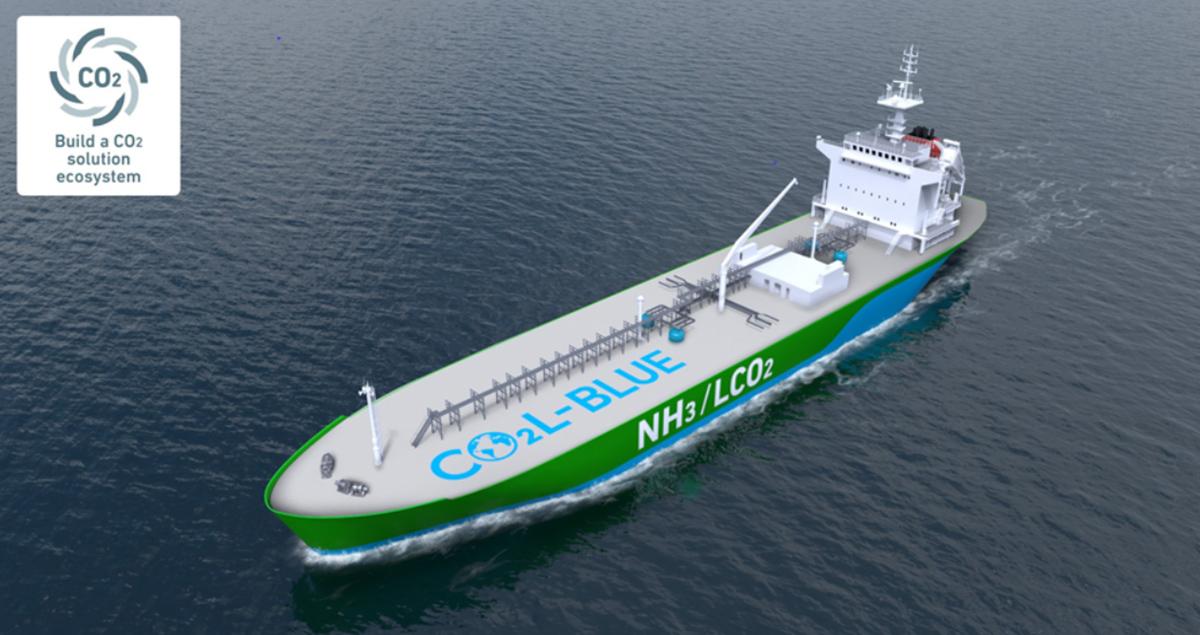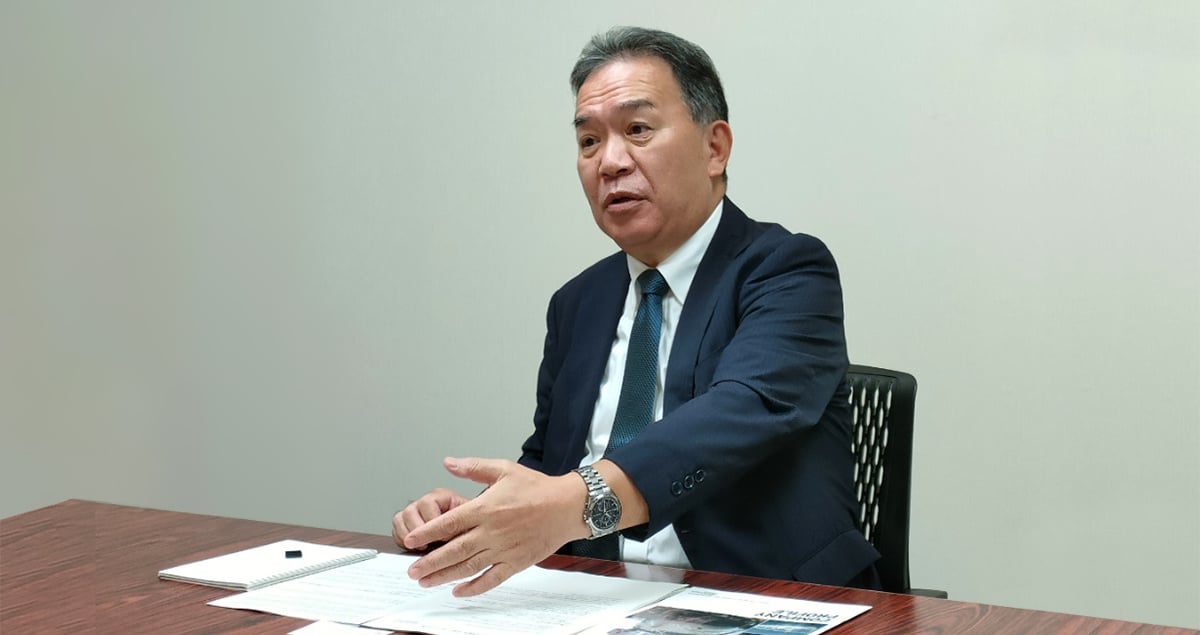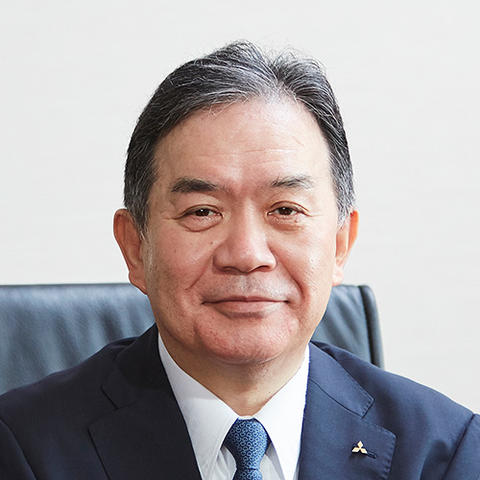Green fuel across blue water: How shipbuilding can help decarbonize the world

This article was previously published in our newsletter, if you're not already a subscriber, sign up here.
In Japanese, the adjective ‘aoi’ can mean both green and blue. If Japanese shipbuilders want to survive – and even thrive — in an industry dominated by giant Chinese and South Korean rivals, they must also fuse green and blue: first, by developing ships that can transport zero carbon fuels; and second, by making those ships themselves more environmentally friendly, particularly by adapting them to run on those new fuels.
I believe this is entirely possible given our experience and advanced technology. At Mitsubishi Shipbuilding, we have launched ships for more than 100 years. We are one of the Japan’s largest manufacturers of specialist vessels, from Coast Guard patrol boats to several kinds of research ships to modern passenger and cargo ferries. Moreover, we can access the foundational technologies of the entire Mitsubishi Heavy Industries (MHI) Group – for example, its expertise in Carbon Capture, Storage and Utilization (CCUS). Our future is as a technology provider and marine systems integrator not just a boat builder.
A critical link in the CO2 value chain
One of our most exciting projects is ‘CO2L-BLUE’, a carbon dioxide carrier. The first LCO2 carrier, with a length of 72 meters and a tank capacity of 1,450 cubic meters, specifically intended for CCUS is now being developed at our shipyard in Shimonoseki for launch in 2023.
In addition to this, an “LCO2/Ammonia carrier”, which can transport both LCO2 and ammonia, is under development. For example, on the outward journey from an energy-exporting country to Japan, it will transport ammonia, either for industrial uses or for conversion into hydrogen on arrival. On the return trip, it will carry CO2 captured at power stations in Japan and liquified on land, which can then be stored, or used in industry outside Japan. The fact that the vessel will be fully loaded on both journeys, which most tankers and cargo ships are not, is very positive for the economics of this project.
Most importantly, the LCO2/Ammonia carrier will form a critical link in the emerging CO2 value chain that covers capture, storage, transport, and then permanent storage or use – we refer to this as “CO2NTAIN”, “CO2NNECT” and “CO2NVERT”, with our LCO2 carrier as the middle part.
Who will own the CO2 as it passes along this value chain; what its price will be at each stage; and whether and how governments must inject incentives are still open questions. But I am confident these will be solved and that the evolution of such a value chain will contribute meaningfully to fighting climate change.

The clean fuels of the future
Turning to decarbonization of the shipping industry itself, it is fair to say this is one of the most challenging sectors of all. Denmark's Maersk Mc-Kinney Moeller Center for Zero Carbon shipping estimates that the world's 100,000 commercial vessels consume around 300m tons of fuel each year and are responsible for 3% of global CO2 emissions.
In response, the International Maritime Organization (IMO), the UN agency responsible for shipping, has set a target to at least halve the industry's greenhouse gas emissions by 2050. But many experts worry this seems to be unrealistic given the 20-year-plus life of most ships and hence the long lead times required to decarbonize entire fleets.
Substantial progress, however, is achievable. The ships we are building at Shimonoseki today require 20% less than fuel than those of 10 years ago as we use computerized fluid dynamics and other techniques to improve designs: hull shapes are changing almost day to day. It is also possible to reduce emissions by optimizing routes and varying speeds.
The biggest gains, however, will come from low- and zero-carbon fuels. Already, 10-20% of new ship orders have switched from heavy marine oil to liquefied natural gas, which produces significantly less CO2 and practically no sulfur oxides. Onboard CCS systems, which MHI is also developing, have the possibility to virtually eliminate CO2 emissions and the carbon can be offloaded when the ship is back in port.
Beyond that, short-haul vessels like coastal ferries and even cruise ships could be powered by giant storage batteries (charged with renewable energy) and, eventually, hydrogen fuel cells. Container ships and tankers plying the high seas should switch to propulsion systems running on ammonia or methanol. The leading marine engine suppliers, for example in Germany, Switzerland and Finland, are promising the first ammonia engines as soon as 2024 — fast work by shipping industry standards!
Challenges and opportunities
There are many engineering challenges still to overcome given that these fuels are difficult to handle and store. But our technology is developing rapidly. I see greater hurdles in bringing down costs and scaling up production to the required volumes, as well as building the necessary infrastructure on land. That will require government support and seamless co-operation among many companies.
However, I also see an opportunity for Japanese shipyards like MHI to play a leading role in solving these issues given our technological expertise and the fact we are regaining competitiveness compared to our Asian rivals. We can revitalize Japan's shipbuilding sector and decarbonize the world at the same time.
Discover more aboutMitsubishi Shipbuilding’s Maritime CO₂ transportation solutions





